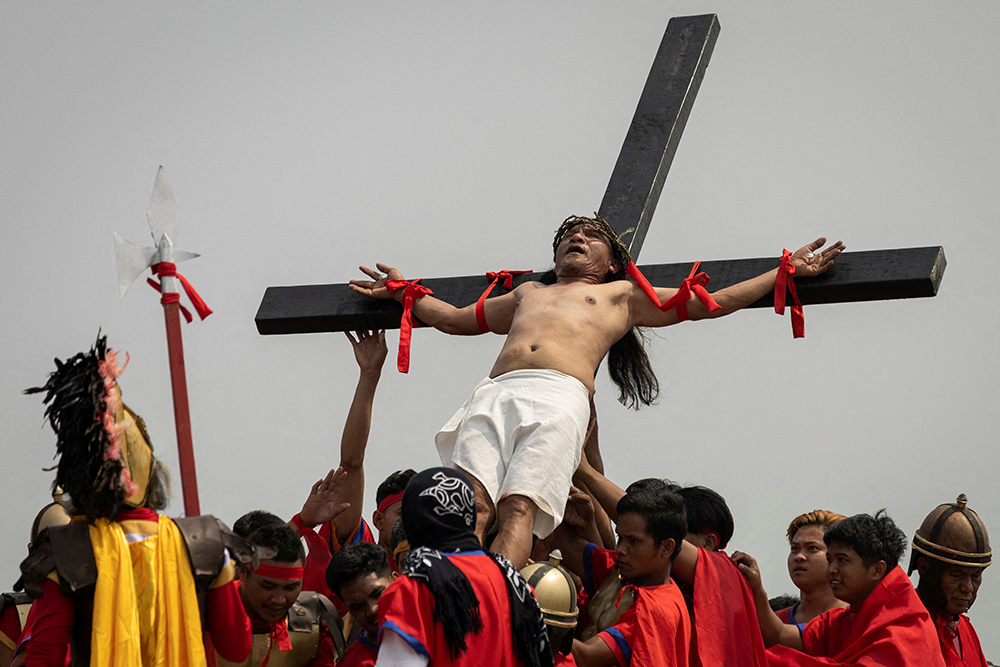
PROSPECT HEIGHTS — Ruben Enaje, a Filipino villager, has once again undergone the harrowing ritual of being nailed to a wooden cross, marking his 35th time in a symbolic reenactment of Jesus Christ’s suffering on Good Friday. Enaje, a 63-year-old carpenter and sign painter, dedicated this year’s crucifixion to prayers for peace in conflict-ridden regions, including Ukraine, Gaza, and the disputed South China Sea.
In the presence of over 100 spectators, including tourists, Enaje and nine other devotees endured the painful ordeal as part of the annual religious spectacle held in three rural communities in Pampanga province, north of Manila.
The tradition had been halted for three years due to the COVID-19 pandemic but resumed with fervor last year. Enaje, who has gained local fame for his role as “Christ” in the reenactment of the Way of the Cross, admitted considering ending the practice due to his advancing age. However, he said he couldn’t refuse the pleas of villagers who sought his prayers for various ailments and troubles.
In a phone interview with The Associated Press on Thursday, Enaje expressed concerns over global conflicts, stating, “If these wars worsen and spread, more people, especially the young and old, would be affected. These are innocent people who have totally nothing to do with these wars.”
He highlighted the indirect impact of conflicts on places like the Philippines, where rising prices of essential commodities have exacerbated the struggles of the poor. Additionally, Enaje voiced apprehensions over the territorial dispute between China and the Philippines in the South China Sea, emphasizing the need for peace.
During the grueling ritual on a dusty hill in San Pedro Cutud and neighboring communities, Enaje and fellow devotees, adorned with thorny crowns, carried heavy crosses for over a kilometer under the scorching sun. Village actors dressed as Roman centurions hammered nails through their palms and feet before hoisting them onto crosses for about 10 minutes.
Tourists, including Maciej Kruszewski from Poland, witnessed the event for the first time, seeking to understand Easter traditions in different parts of the world.
The practice, though drawing criticism from Church leaders, persists as a unique blend of Catholicism and folk traditions in the Philippines, where devotees seek to atone for sins, pray for the sick, and give thanks for blessings in their lives. Despite the physical toll and objections from religious authorities, the tradition endures, reflecting the deep faith and cultural heritage of the Filipino people.
